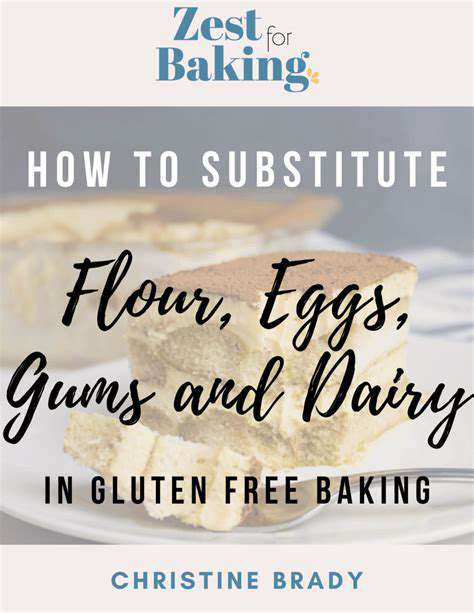Gluten Free Baking Tips: Success Every Time
Factors to Consider When Choosing Gluten-Free Flour
Your baking goals should guide your flour selection. A tender pastry demands different qualities than a crusty artisan loaf, and gluten-free flours respond differently under various conditions. Always let your recipe's requirements dictate your flour choices rather than using a universal blend. Careful attention to measurement ratios and preparation methods significantly improves outcomes.
Texture preferences play an equally vital role in flour selection. Some blends yield airy results perfect for spongecakes, while others create substantial crumb structures ideal for muffins. Consider how you want the final product to feel in your mouth - this awareness informs better flour decisions. Don't hesitate to test multiple variations to discover your perfect match.
Gluten-Free Flour Blends: A Deeper Dive
Sophisticated gluten-free blends typically incorporate three to five different flours and starches, each contributing unique functional properties. Commercial blends often include xanthan gum or psyllium husk to replicate gluten's binding qualities. Many professional bakers develop signature blends through extensive testing and refinement.
Personal experimentation yields the most rewarding results. Adjusting ratios by even small percentages can dramatically alter texture and rise. Keeping detailed notes during your baking experiments helps identify the perfect combinations for different applications. This systematic approach leads to consistent, restaurant-quality results in home baking.
Recipe-Specific Flour Recommendations
Specialized recipes often perform best with purpose-formulated blends. Delicate pastries benefit from higher starch content, while yeast breads require protein-rich mixtures that can trap air bubbles. Treat recipe authors' flour suggestions as valuable guidance rather than optional advice. These recommendations typically represent extensive testing to achieve optimal performance.
Understanding each ingredient's functional role leads to smarter substitutions when needed. For bread recipes, adding bean flour increases protein for better structure, while cakes benefit from extra starch for tenderness. Learning to read a recipe's flour requirements develops your gluten-free baking intuition. This skill becomes invaluable when adapting traditional recipes to gluten-free versions.
Elevating Gluten-Free Baking with Substitutions

Elevating Gluten-Free Baking with Innovative Ingredients
Contemporary gluten-free baking transcends mere dietary restriction, offering exciting culinary opportunities. Modern ingredient technology provides solutions that early gluten-free bakers could only imagine. Today's alternative flours create textures so convincing that many tasters can't distinguish them from wheat-based products.
The revolution in flour technology stems from precise understanding of carbohydrate structures and protein interactions. Specialty mills now produce flours with particle sizes and hydration properties specifically engineered for baking applications. These advances allow gluten-free goods to achieve that coveted just like the real thing quality.
Understanding Gluten-Free Flour Blends
Effective gluten-free baking requires moving beyond simple one-to-one substitutions. Each flour component serves specific purposes - some provide structure, others contribute to browning, while certain additions improve moisture retention. Successful bakers think like chemists, understanding how different ingredients interact during mixing and baking.
Documenting your blend experiments proves invaluable for developing personal recipes. Note-taking should include blend ratios, mixing techniques, baking times, and sensory evaluations. Over time, this creates a personalized reference library that takes the guesswork out of gluten-free baking.
Mastering Gluten-Free Techniques
Traditional baking methods often require adaptation for gluten-free success. The absence of gluten changes how batters and doughs behave during mixing, resting, and baking. Many professional bakers recommend the muffin method of mixing for most gluten-free applications - combining dry and wet ingredients separately before gentle incorporation.
Temperature control becomes more critical in gluten-free baking. Ingredients like eggs and dairy should typically be at room temperature to ensure proper emulsification. Baking times may vary significantly from wheat-based recipes, as gluten-free goods often benefit from slightly longer, slower baking at moderate temperatures.
Beyond the Basics: Creative Gluten-Free Flavors
Gluten-free baking opens doors to global flavor exploration. Ancient grains like teff and sorghum introduce earthy, complex notes, while nut flours add richness and depth. The neutral flavor profiles of many gluten-free bases provide perfect canvases for bold flavor experimentation.
Consider pairing ingredients by cultural tradition for authentic results. Mexican-inspired baked goods might incorporate masa harina, while Italian recipes could benefit from chestnut flour. This approach respects traditional flavor pairings while accommodating dietary needs, creating truly special culinary experiences.